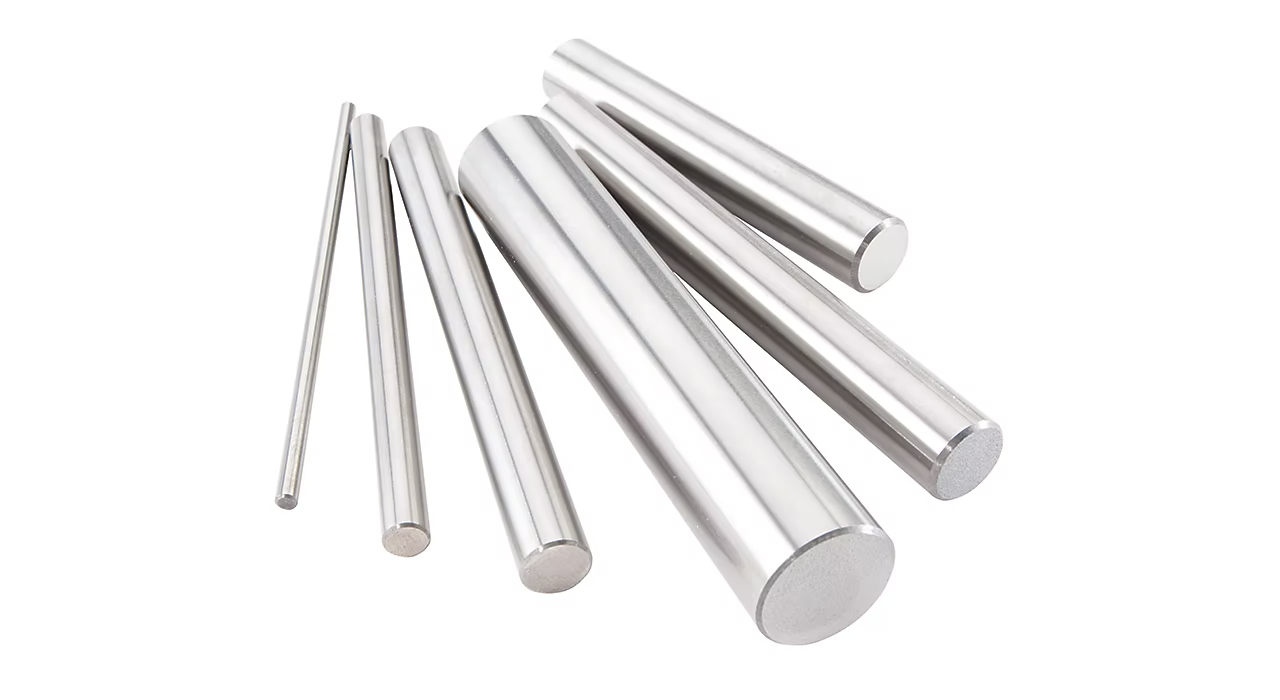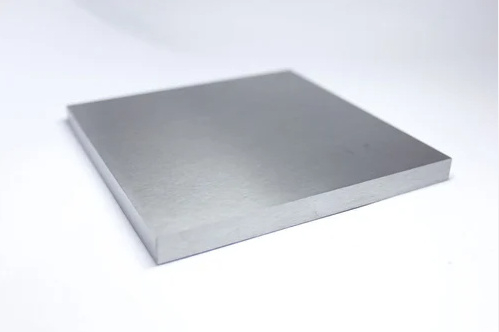개요
기하학적 구조와 디자인 카바이드 엔드밀은 절삭 성능에 중요한 역할을 합니다. 이러한 요소를 이해하면 가공 효율성, 공구 수명 및 표면 정삭 품질을 크게 향상시킬 수 있습니다. 이 블로그에서는 카바이드 엔드밀 형상과 설계의 복잡한 세부 사항을 자세히 살펴보고 절삭 성능에 어떤 영향을 미치는지 강조합니다. 이 포괄적인 가이드는 숙련된 기계 기술자든 현장의 초보자든 절삭 작업을 최적화하는 데 유용한 통찰력을 제공합니다.
세부 분석
카바이드 엔드밀이란 무엇인가요?
카바이드 엔드밀은 탄소와 텅스텐의 화합물인 카바이드로 만든 밀링 작업에 사용되는 절삭 공구입니다. 경도와 내마모성으로 잘 알려진 카바이드는 금속, 플라스틱, 복합재 등 다양한 소재의 고속 정밀 가공에 이상적입니다.
카바이드 엔드밀 형상의 핵심 요소
카바이드 엔드밀의 기하학적 구조는 절삭 성능을 종합적으로 결정하는 몇 가지 중요한 요소를 포함합니다:
- 플루트 수
- 나선 각도
- 끝 지오메트리
- 코어 직경
- 최첨단 준비
- 방사형 및 축 방향 레이크 각도
이러한 각 요소를 자세히 살펴보겠습니다.
플루트 수
엔드밀의 플루트 수는 성능에 큰 영향을 미칩니다. 일반적인 플루트 수는 2개에서 8개까지 다양합니다.
- 두 개의 플루트: 알루미늄과 같은 부드러운 소재에 이상적이며 칩 배출이 탁월합니다.
- 세 개의 플루트: 다양한 소재에 적합한 칩 간극과 공구 강도 사이의 균형.
- 플루트 4개 이상: 더 단단한 소재에 적합하며 강도는 높이고 잡음은 줄입니다.
나선 각도
나선 각도는 절삭날과 엔드밀의 축 사이에 형성된 각도입니다. 일반적인 나선 각도는 30°~60°입니다.
- 로우 헬릭스(15°-30°): 강화된 강도로 더 단단한 소재에 적합합니다.
- 중간 나선(30°-40°): 다용도, 강도와 칩 배출 사이의 균형을 제공합니다.
- 하이 헬릭스(45°-60°): 칩 배출이 우수하여 부드러운 소재와 고속 가공에 이상적입니다.
끝 지오메트리
절삭 날과 공구의 끝 부분 디자인을 포함한 끝 부분 형상은 절삭 동작과 표면 조도에 영향을 미칩니다.
- 정사각형 끝: 일반적으로 범용 밀링에 사용되는 평평한 표면을 만듭니다.
- 볼 엔드: 컨투어링 및 3D 가공에 이상적이며 매끄러운 마감을 제공합니다.
- 모서리 반경: 칩핑을 줄여 공구 강도를 향상시켜 무거운 절삭 및 단단한 재료에 적합합니다.
코어 직경
코어 직경은 엔드밀의 중앙 섕크의 직경을 말합니다. 코어 직경이 클수록 강성과 강도가 높아져 공구의 휨과 파손이 줄어듭니다.
최첨단 준비
절삭날의 날카로움과 마감은 공구의 절삭 효율과 수명에 영향을 미칩니다. 잘 준비된 절삭날은 절삭력을 줄이고 표면 조도를 향상시킵니다.
방사형 및 축 방향 레이크 각도
- 방사형 레이크 각도: 칩 흐름과 절삭력에 영향을 줍니다. 양의 경사각은 절삭력을 감소시키고 음의 경사각은 공구 강도를 증가시킵니다.
- 축 방향 레이크 각도: 절삭 날과 재료의 결합에 영향을 주어 칩 형성 및 표면 마감에 영향을 줍니다.
표: 카바이드 엔드밀 형상의 주요 요소
| 요소 | 설명 | 성능에 미치는 영향 |
|---|---|---|
| 플루트 수 | 절삭 날 수 | 칩 배출 및 공구 강도에 영향을 미칩니다. |
| 나선 각도 | 절삭날과 공구 축 사이의 각도 | 칩 흐름 및 절삭력에 영향 |
| 끝 지오메트리 | 도구의 끝 디자인(예: 정사각형, 공, 모서리 반경) | 표면 마감 및 절단 작업 결정 |
| 코어 직경 | 공구 중앙 생크의 지름 | 강성 및 강도에 영향을 미칩니다. |
| 최첨단 준비 | 절삭 날의 선명도와 마감 | 절삭 효율 및 공구 수명에 영향 |
| 방사형 레이크 각도 | 방사형 방향의 절삭 날 각도 | 칩 흐름 및 절삭력에 영향 |
| 축 방향 레이크 각도 | 축 방향의 절삭 날 각도 | 재료 및 칩 형성과의 결합에 영향을 미칩니다. |
기하학적 구조와 디자인이 절단 성능에 미치는 영향
칩 대피
효과적인 칩 배출은 절삭 효율을 유지하고 공구 손상을 방지하는 데 매우 중요합니다. 플루트 수와 나선 각도는 절삭 영역에서 칩이 효율적으로 제거되도록 하는 데 중요한 역할을 합니다.
- 높은 플루트 수: 표면 마감이 더 좋지만 부드러운 소재의 경우 칩으로 막힐 수 있습니다.
- 낮은 나선 각도: 더 강력한 커팅 엣지, 덜 효율적인 칩 배출.
도구 강도 및 강성
공구 강도와 강성은 특히 단단한 소재에서 휨과 파손을 방지하는 데 매우 중요합니다. 코어 직경과 플루트 형상은 이러한 속성에 직접적인 영향을 미칩니다.
- 더 커진 코어 직경: 강성 및 강도 향상.
- 플루트 수 감소: 더 튼튼한 도구, 파손 위험이 적습니다.
표면 마감
표면 마감 품질은 엔드 형상과 커팅 엣지 준비에 따라 달라집니다. 매끄럽고 잘 준비된 절삭 날이 더 나은 마감을 만들어냅니다.
- 볼 엔드 지오메트리: 매끄럽고 윤곽이 있는 표면에 이상적입니다.
- 날카로운 절삭날: 가공 후 마무리 작업의 필요성을 줄입니다.
커팅 포스
절삭력은 레이크 각도와 절삭날 설계의 영향을 받습니다. 절삭력이 낮을수록 공구 마모와 에너지 소비가 줄어듭니다.
- 포지티브 방사형 레이크 각도: 절삭력을 줄여 부드러운 소재에 이상적입니다.
- 네거티브 레이크 각도: 강도가 증가하여 단단한 재료에 적합합니다.
애플리케이션별 엔드밀 설계
알루미늄 및 부드러운 소재의 경우
- 높은 나선 각도: 칩 배출을 개선합니다.
- 두 개 또는 세 개의 플루트: 막힘을 줄이고 표면 마감을 향상시킵니다.
강철 및 단단한 재료의 경우
- 낮은 나선 각도: 강도와 안정성을 제공합니다.
- 플루트 4개 이상: 강성을 높이고 잡음을 줄입니다.
컨투어링 및 3D 가공용
- 볼 엔드 지오메트리: 매끄럽고 정확한 윤곽을 표현합니다.
- 높은 나선 각도: 복잡한 형상에서 칩 흐름을 개선합니다.
목록: 최적화된 초경 엔드밀 형상의 이점
- 향상된 절단 효율성: 가공 시간 및 에너지 소비를 줄입니다.
- 향상된 표면 마감: 보조 작업의 필요성을 최소화합니다.
- 연장된 공구 수명: 공구 마모 및 교체 빈도 감소.
- 다목적 가공: 다양한 재료와 절단 조건에 적응합니다.
- 공구 휨 감소: 치수 정확도와 정밀도를 유지합니다.
올바른 카바이드 엔드밀 선택
적절한 카바이드 엔드밀을 선택하려면 재료, 가공 조건 및 원하는 결과를 고려해야 합니다. 다음은 몇 가지 팁입니다:
- 재료 호환성: 엔드밀의 형상을 가공 중인 재료와 일치시킵니다.
- 가공 조건: 기계의 속도, 이송 속도, 강성을 고려하세요.
- 절단 목표: 원하는 표면 마감과 치수 정확도를 결정합니다.
표: 카바이드 엔드밀 선택 가이드
| 재질 | 권장 플루트 수 | 나선 각도 | 끝 지오메트리 | 코어 직경 |
|---|---|---|---|---|
| 알루미늄 | 2-3 | 높음(45°-60°) | 정사각형 또는 공 | 표준 |
| 강철 | 4+ | 중간(30°-40°) | 정사각형 또는 모서리 반경 | 더 크게 |
| 티타늄 | 3-4 | 중간 높음(35°-45°) | 정사각형 또는 공 | 표준에서 더 크게 |
| 플라스틱 | 2-4 | 높음(45°-60°) | 정사각형 | 표준 |
엔드밀 설계의 미래 트렌드
재료 과학 및 기계 가공 기술의 발전은 엔드밀 설계의 혁신을 지속적으로 주도하고 있습니다. 새로운 트렌드는 다음과 같습니다:
- 나노 복합 코팅: 초박형 내마모성 레이어로 공구 성능 향상.
- 하이브리드 지오메트리: 특수한 애플리케이션을 위해 서로 다른 형상의 기능을 결합합니다.
- 적층 제조: 3D 프린팅 기술을 통해 도구 형상을 사용자 지정합니다.
자주 묻는 질문
Q1: 플루트 수는 칩 배출에 어떤 영향을 미치나요?
A1: 플루트 개수에 따라 칩 배출에 사용할 수 있는 공간이 결정됩니다. 플루트 수가 적을수록 칩을 위한 공간이 더 넓어지므로 부드러운 소재에 이상적입니다. 플루트가 많을수록 강도가 높아져 단단한 재료에 더 적합합니다.
Q2: 엔드밀에서 헬릭스 각도의 중요성은 무엇인가요?
A2: 나선 각도는 칩 흐름과 절삭력에 영향을 미칩니다. 나선 각도가 높을수록 칩 배출이 개선되고 고속 가공에 적합하며, 나선 각도가 낮을수록 단단한 재료 절삭에 강도를 제공합니다.
Q3: 정사각형과 볼 엔드와 같은 엔드 지오메트리는 애플리케이션에서 어떻게 다른가요?
A3: 사각 엔드밀은 평평한 표면을 생성하고 범용 밀링에 사용되는 반면, 볼 엔드밀은 윤곽 및 3D 가공용으로 설계되어 복잡한 형상을 매끄럽게 마감할 수 있습니다.
Q4: 최첨단 준비가 중요한 이유는 무엇인가요?
A4: 샤프닝과 정삭을 포함한 절삭날 준비는 절삭력을 줄이고 표면 조도를 개선하며 마모와 칩핑을 최소화하여 공구 수명을 연장합니다.
Q5: 카바이드 엔드밀을 재연마할 수 있습니까?
A5: 예, 카바이드 엔드밀은 재연마하여 수명을 연장할 수 있습니다. 적절한 재연마는 공구의 형상과 성능을 유지하여 지속적인 절삭 효율을 보장합니다.
좋은 품질의 엔드밀을 적절한 가격에 구매하고 싶으신가요? 클릭 여기.




